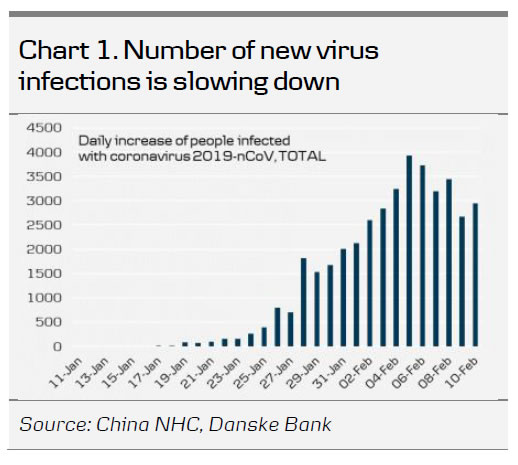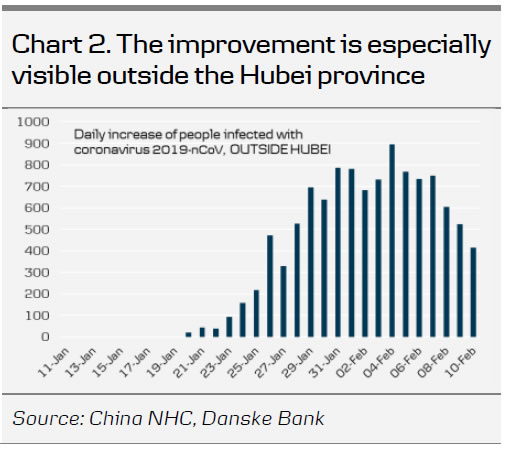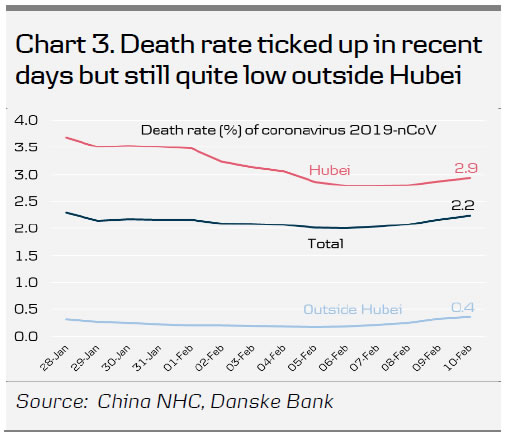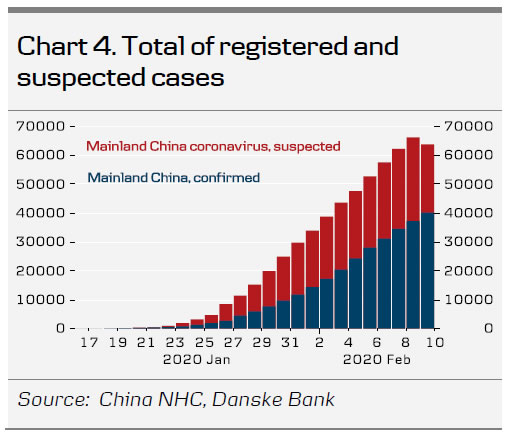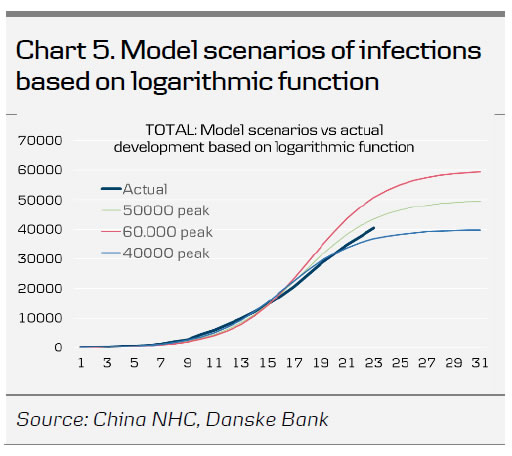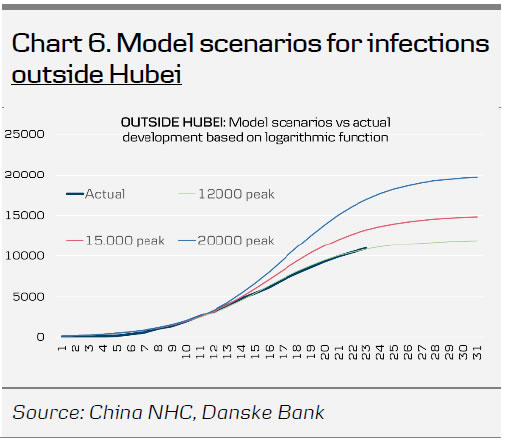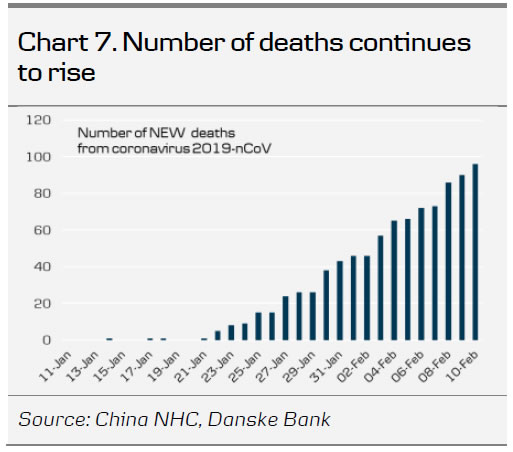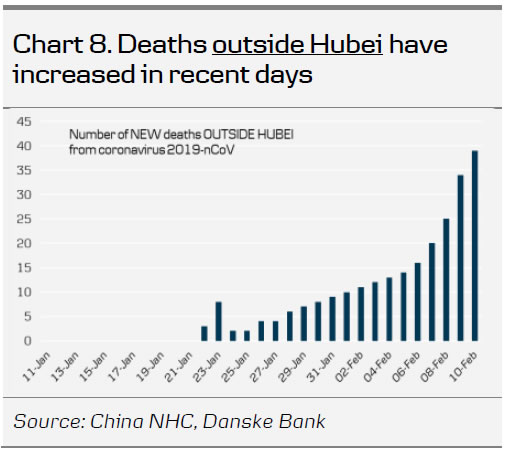- Despite some negative headlines over the weekend, there have been more signs in recent days that the spread of the coronavirus is slowing down.
- When it comes to the number of deaths, it is now above 800, which exceeds the level from SARS in 2003. The death count should slow down with a lag compared to the number of infections.
- China is restarting production today following an extended holiday. It could lead to a pick-up in the contagion rate and hence uncertainty will be with us for a while.
- We continue to look for a V-shape scenario for Chinese growth with a sharp decline in February and March but a rebound during Q2, see also Research: Vshape scenario for global growth on back of coronavirus, 3 February 2020.
A run-down of the latest data
- Infections. The number of infections has increased to 40,536. However, the daily rate of increase has slowed down. The absolute rise in cases was 2,500-3,000 in the past two days, down from 3,500-4,000 five days ago. The number of suspected cases showed the first decline today when it dropped to 23,589 from 28,942 yesterday.
- The slowdown in contagion is mostly evident outside the Hubei province (the epicentre of the crisis). Today 416 new cases were reported, the lowest level in two weeks (Chart 2). The daily percent is down to 4% from above 50% two weeks ago. The percent increase in cases outside mainland China is also fairly low at 5%.
- Based on the recent developments our models point to a peak around 60,000 cases, 48,000 in Hubei and 12,000 outside Hubei (Chart 4 and 5).
- Death rate. The number of deaths rose to 910 today. Of the deaths 96% were in the Hubei province. The total death rate is 2.2% with 2.9% inside the Hubei province and 0.4% outside. Outside mainland China, the death count is still two, leading to a death rate of 0.5%.
Can the numbers be trusted?
We get a lot of questions on whether the data can be trusted. Here is our view. The numbers for Hubei are almost certainly underreported, but mostly due to capacity challenges. Based on anecdotal evidence, it seems the most serious cases are reported, while capacity constraints imply that people with milder symptoms are sent home with a message to stay inside and return if the symptoms get worse. It also suggests that the death rate is lower than reported in Hubei as all the cases with mild symptoms are not registered. They may be part of the category ‘suspected’ or ‘under observation’. The daily change is also falling for these categories (first decline in ‘suspected’ was registered today).
Outside of Hubei, we believe the numbers are broadly correct as there is less strain on capacity here. We do not believe the authorities hide cases on purpose as Beijing has made clear that any failure to report will be punished. In addition, WHO is working closely with China and has endorsed the reporting. Outside mainland China, we also believe the numbers to be reliable, although there could be people with mild symptoms only that are not registered.
The picture of moderate improvement is emerging both within China outside the Hubei province as well as outside mainland China. It suggests the picture is broadly real.
Finally, we believe that what the data is showing makes sense. When you lock down a whole province and other areas and people stay home and avoid public transport and big gatherings, then you should expect contagion to slow. It is too early to say it is under control but the measures taken are working. The coming weeks will be crucial as factories start up again with metros filling up and more contact in the work places. There is a risk it increases contagion levels again.




